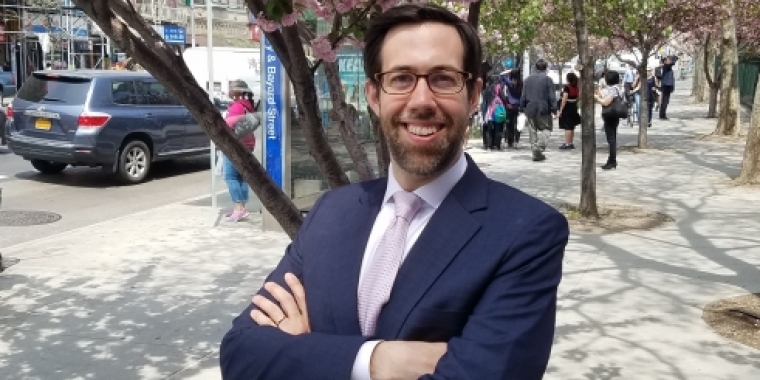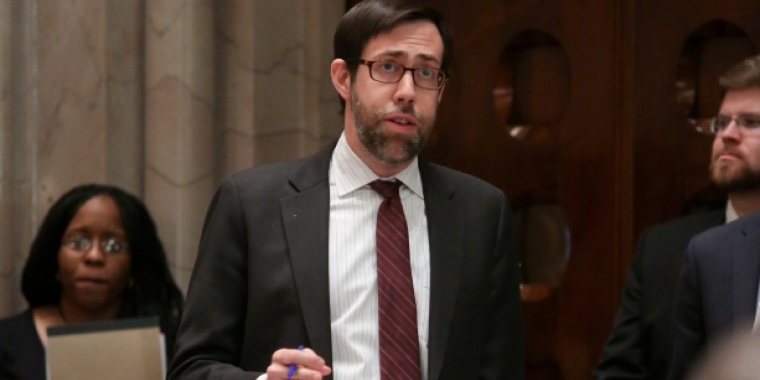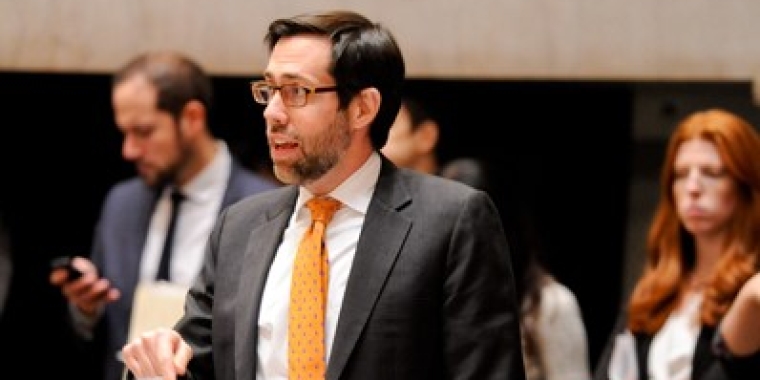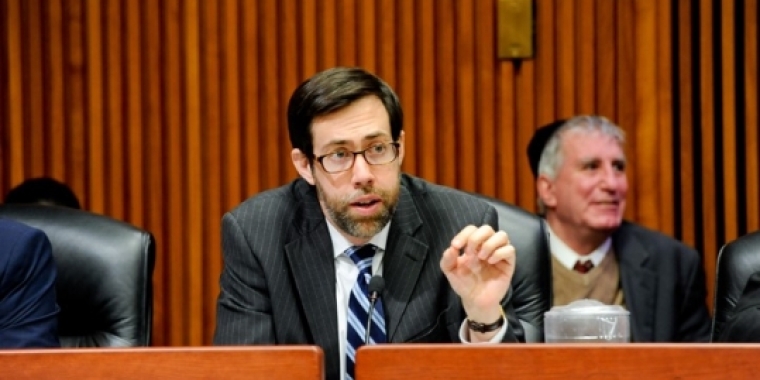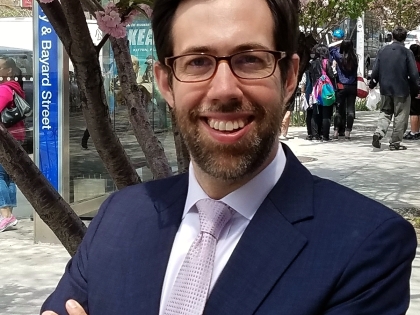
Squadron Comments on NYCHA Annual Plan
August 3, 2016
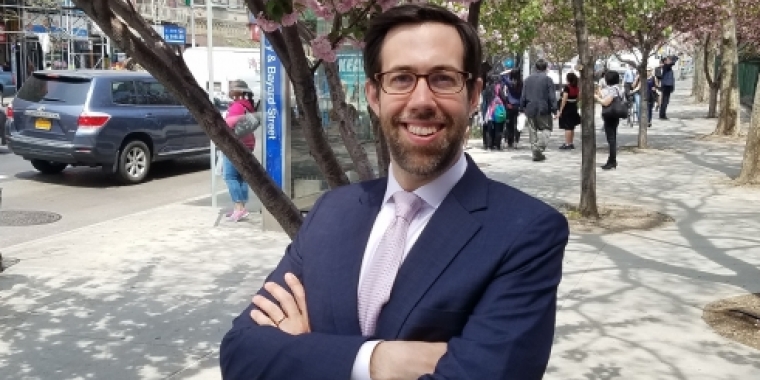
TESTIMONY OF STATE SENATOR DANIEL SQUADRON REGARDING THE DRAFT ANNUAL PLAN 2017 FOR THE NEW YORK CITY HOUSING AUTHORITY
August 3, 2016
My name is Daniel Squadron, and I represent the 26th District in the New York State Senate. My district includes the Brooklyn neighborhoods of Greenpoint, Williamsburg, Vinegar Hill, DUMBO, Fulton Ferry, Brooklyn Heights, Cobble Hill, and Carroll Gardens and the Manhattan neighborhoods of Tribeca, Battery Park City, the Lower East Side, Chinatown, the Financial District, Greenwich Village, Little Italy, SoHo and the East Village.
Among the New Yorkers that I represent are the approximately 25,000 residents of 19 New York City Housing Authority (NYCHA) developments, spanning the Lower East Side, East Village, and Chinatown. The developments in my district include Baruch Houses, Bracetti Houses, East 4th Street Rehab, First Houses, Gompers Houses, Hernandez Houses, LaGuardia Houses, Lower East Side I and II, Meltzer Tower, Rutgers Houses, Seward Park Extension, Smith Houses, Stanton Street, Two Bridges, Vladeck Houses I and II, Wald Houses, and 45 Allen Street.
The NYCHA Fiscal Year 2017 Annual Plan (Annual Plan) details the ongoing pressures the agency and its nearly 500,000 residents face. Although the Annual Plan notes several strategies aimed at reducing “NYCHA’s capital needs by $4.6 billion over ten years,” NYCHA still faces an estimated $16 to $17 billion shortfall in major capital improvement needs. This is in addition to the operating deficit NYCHA faces, estimated at $22 million.
Many of my constituents reside in public housing developments, and I consider their need for high quality housing a priority. For years, I have worked with colleagues, agency officials, and advocates to address chronic underfunding. We have also worked together on some of NYCHA’s ongoing challenges, such as better responsiveness to resident concerns and repair requests. In both cases, progress has been made, particularly under this administration.
Fiscal Challenges and Progress
For many years, I urged the City to terminate its Memorandum of Understanding (MOU) with NYCHA that required the Authority to pay the New York Police Department (NYPD) over $70 million for law enforcement services. This arrangement burdened NYCHA with a major expense unique to NYCHA, and not shouldered by any other landlord. The City’s termination of this arrangement was a major victory not only for NYCHA financially, but also for residents.
Since 2014, the City has relieved NYCHA of over $100 million in annual payments, allocated $300 million to replace roofs, and pledged approximately $100 million for exterior work in the upcoming year. These are important contributions, and we must do more to preserve our public housing options for future generations.
In Albany, I was proud to pass legislation "federalizing" NYCHA developments, a measure that allows the agency to draw nearly $75 million a year in operating funds as well as hundreds of millions of dollars for capital improvements. I also helped establish the Save Our Underfunded NYCHA Developments (SOUND) Housing Campaign, along with elected colleagues, tenants, and a broad coalition to secure the basic resources necessary for NYCHA to provide the proper level of services to its residents. However, the State has not consistently done nearly enough to meet its responsibilities to NYCHA.
Governor Cuomo’s recently announced Affordable Housing Program is an important opportunity to increase State investment. Unfortunately, the housing agreement reached earlier this year fell short of what was promised. Elected officials, tenants, and NYCHA must do all we can to ensure that State funds be allocated towards infrastructure improvements that would allow NYCHA to preserve its properties.
Though past budget and policy failures have led to many of the issues currently facing public housing in our city, NYCHA must not exacerbate the problem going forward. As NYCHA pursues new funding strategies, such as the NYCHA NextGeneration development plan and the transfer of public housing units to alternative ownership under the Rental Assistance Demonstration (RAD) program, it must only move forward in strong collaboration with residents, and have a real plan to close its entire funding gap.
In addition, the U.S. Department of Housing and Urban Development (HUD) has proposed changes to Section 8 vouchers, and the method by which Fair Market Rates (FMR) are calculated by introducing Small Area FMRs to New York City. I urge NYCHA to comment on this proposal and consider the impact this may have on current voucher holders, particularly in my district on the Lower East Side.
Property Management and Future of Properties
It is critical that NYCHA focus on its primary function as a landlord responsible for maintaining 178,000 units of affordable housing. NYCHA has decreased repair times but the agency must do more to respond to its residents, as any landlord would.
In many instances, I have worked successfully with NYCHA to address individual concerns raised by residents at the developments in my district. We worked together with the New York City Department of Transportation to prioritize sidewalk repairs for residents at the Rutgers and LaGuardia Houses. We also worked together to fully repair the unreliable gas pipes that left residents of the Smith Houses without cooking gas for weeks or months at a time.
However, these success stories were all prompted by elected officials acting on the concerns of residents. NYCHA deserves credit for taking action when prompted, but it should not take elected official intervention for routine repairs and improvements. This has been especially pronounced at developments in my district with elevator service requests. Residents routinely call my office regarding elevator malfunctions, and delayed elevator repairs.
According to the Annual Plan, NYCHA’s launch of MyNYCHA app, a smartphone application to schedule and review repair requests, has resulted in the creation of nearly 100,000 work repair orders. Modernization of repairs requests and resident communication is a positive step. It is also important that services like MyNYCHA app are made accessible to tenants for whom English is not the primary language. My office has received complaints from housing advocates regarding poor language access to NYCHA’s repair services, particularly Chinese-language access, suggesting there is room to enhance language accessibility.
It is promising that NYCHA is looking to improve its management practices beyond this. These housing management reforms aim to empower local decision making at developments, and, according to the Annual Plan, have “reduced work order completion time to 6.2 days from 21 days.” One of these improvement efforts is the Optimal Property Management Operating Model (OPMOM) program, which decentralizes on-site management and resources. OPMOM should be evaluated and expanded rapidly if found to be helpful in improving services to residents.
Security at NYCHA developments continues to be a concern. The Annual Plan summarizes security upgrades citywide, and mentions the new Public Safety Advisory Committee, which brings residents, NYCHA staff, law enforcement agencies, and other community stakeholders to the table to help shape plans to increase security. These are positive steps, and I am proud to have secured funding to improve security at several developments in my district, including a senior development at Baruch Houses on the Lower East Side.
Unfortunately, reports of lead exposure in NYCHA developments also remains a critical health issue impacting residents. NYCHA has taken steps to work together with the New York City Department of Mental Health and Hygiene (DOHMH) on this issue, but it is critical that every effort is made to protect tenants from the dangers of lead exposure. I worked with DOHMH to create a pilot program that notifies tenants at risk of lead exposure at privately owned buildings, and NYCHA should follow the same protocol if lead exposure is found in common areas in developments.
Additionally, NYCHA deserves credit for its post-Hurricane Sandy resiliency work. My district was severely impacted by Hurricane Sandy, which resulted in thousands of my constituents losing basic services and utilities. According to the Annual Plan, NYCHA has started resiliency construction at more than 20 developments, several of which are in my district in lower Manhattan. As NYCHA proceeds with capital investments to make its developments more storm resilient, it is also critical that NYCHA ensures that tenants who have disabilities or are homebound are appropriately engaged in emergency protocol planning, and there is a plan to evacuate these residents.
Thank you for the opportunity to testify today.
###
